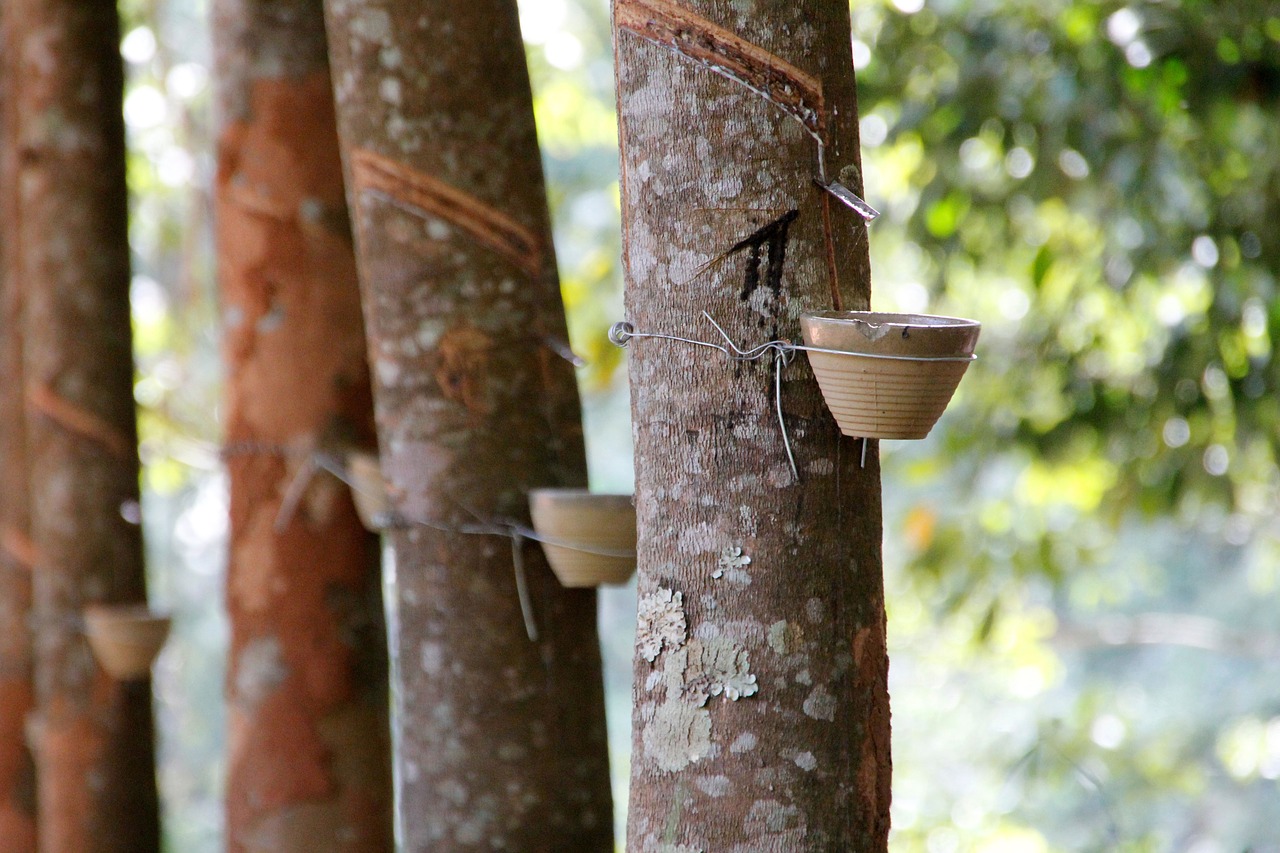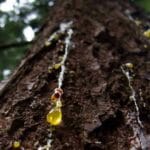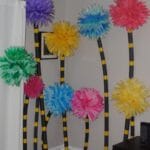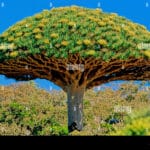That milky goo dripping from some tropical trees? It’s far more interesting than it looks! We’re talking about tree latexes – amazing, sticky substances with a rich history and diverse uses, ranging from the rubber that revolutionized transportation to the chicle that formed the base of classic chewing gum. This article delves into the science and stories behind these incredible plant products, covering their origins, uses, and the crucial need for sustainable harvesting practices. Let’s explore the fascinating world of tropical tree latexes together!
Tropical Tree Sap: Beyond Rubber and Chicle
What comes to mind when you think of the sticky sap from tropical trees? Likely rubber, but the reality is far more diverse. Numerous trees in warm, humid climates produce unique, gooey substances, each with its own chemical composition and applications. Consider this nature’s versatile toolkit, brimming with unexpected possibilities.
Let’s explore this fascinating variety. The sapodilla tree, for instance, provides chicle, the basis for centuries of chewing gum. And numerous others offer similarly intriguing compounds.
Here’s a glimpse of this amazing diversity:
| Tree Species | Scientific Name | Latex Color | Key Ingredients | Traditional & Modern Uses |
|---|---|---|---|---|
| Rubber Tree | Hevea brasiliensis | Milky white | Natural rubber (cis-1,4-polyisoprene) | Tires, gloves, countless rubber products, medical devices |
| Sapodilla Tree | Manilkara zapota | Pinkish-reddish | Chicle (a complex resin) | Chewing gum (historically), potentially other uses |
| Para Rubber Tree | Hevea brasiliensis | Milky White | Natural Rubber (cis-1,4-polyisoprene) | Tires, gloves, medical devices |
| Gutta-Percha Tree | Palaquium gutta | Milky white to yellowish | Gutta-percha | Golf ball covers, electrical insulation, dental fillings |
| Jelutong Tree | Dyera costulata | Milky white | Jelutong (a complex resin) | Adhesives, chewing gum, possibly other applications |
The chemical makeup of these saps is remarkably diverse. Natural rubber, predominantly cis-1,4-polyisoprene, contrasts sharply with the complex mixtures of polymers, resins, and proteins found in other tree saps, each influencing their unique properties and applications.
A History Steeped in Sap: From Ancient Uses to Modern Applications
Humans have utilized these milky tree juices for millennia. Long before modern industry, ancient civilizations, such as the Maya, employed chicle for chewing gum and other purposes. The Industrial Revolution catapulted rubber to prominence, transforming manufacturing and global trade, particularly impacting economies in rubber-producing regions. Vulcanization, a process strengthening rubber, proved revolutionary, broadening its applications considerably.
Harvesting and Processing: Traditional Methods and Sustainable Practices
Historically, latex harvesting involved carefully tapping trees, a labor-intensive process requiring skill to avoid harming the trees. Modern techniques aim for greater efficiency while prioritizing environmental sustainability. After harvesting, processing often includes steps such as solidification, drying, and purification to yield useable products. Sustainable practices are paramount; responsible resource management is critical to prevent depletion and damage to surrounding ecosystems.
Environmental Impact: Balancing Needs with Conservation
Unfortunately, unsustainable harvesting has resulted in deforestation and biodiversity loss. Rubber plantations, for instance, can significantly impact the environment if not managed responsibly. Scientists actively research sustainable approaches, including biomimicry, to meet human needs without causing ecological harm. Finding innovative solutions to balance resource utilization with environmental protection is a significant challenge for future research, requiring interdisciplinary collaboration.
Unexplored Potential: Future Applications and Research
Many tropical tree species remain understudied. Their saps hold potentially significant, yet unknown applications. There’s exciting potential for discoveries leading to new medicines, cosmetics, bioplastics (biologically sourced materials), and numerous other uses. Further research is needed to unlock this potential, requiring careful consideration of sustainable harvesting practices. Responsible resource management is key to ensuring these incredible resources are used wisely for generations to come.
Which Plant Yields Chewing Gum Latex? [https://www.lolaapp.com/]
The Sapodilla Tree: A Chewy Secret
The history of chewing gum is deeply connected to the sapodilla tree (Manilkara zapota), a striking evergreen producing a milky white sap called chicle. This isn’t just any sap; it’s the primary ingredient used for chewing gum for centuries!
Harvesting Chicle: A Delicate Balance
The traditional chicle harvesting process demonstrates a skillful interaction with nature. Skilled workers make precise, small V-shaped cuts in the bark. The creamy white liquid that oozes out—raw chicle—then needs further processing. This requires expertise to avoid damaging the tree and ensure sustainability. Over-harvesting directly threatens these valuable trees and the communities that depend on them.
Chicle’s Unique Chewiness: A Matter of Chemistry
Chicle’s remarkable chewiness stems from its unique chemical blend of gutta, resins, carbohydrates, and waxes. This differs significantly from rubber tree latex (primarily cis-1,4-polyisoprene), highlighting the stunning diversity in tropical tree sap chemistry.
Here’s a comparison:
| Latex Source | Main Ingredients | Properties |
|---|---|---|
| Chicle (M. zapota) | Gutta, resins, carbohydrates, and waxes | Chewy, stretchy, slightly sticky |
| Rubber (Hevea brasiliensis) | Mostly cis-1,4-polyisoprene | Extremely stretchy, waterproof, not suitable for chewing |
A Chewing Gum History Lesson
The ancient Maya utilized chicle, likely for more than just chewing. Fast-forward to the 1800s, and chicle became a vital component in commercial chewing gum—a global phenomenon! The shift from natural chicle-based gums to synthetic alternatives marks a significant turning point in the industry, driven by factors such as cost and consistent supply.
Exploring Alternatives: The Search for New Natural Gums
While chicle remains important, scientists explore other natural gum sources. While no perfect replacement currently exists, research into various plant species suggests potential alternatives. The flavor and texture of future chewing gums are likely to be influenced by these discoveries.
Sustainable Practices: Securing the Future of Chewing Gum
Sustainable harvesting of chicle is critical for the long-term health of sapodilla trees and the communities dependent on them. The future of chewing gum hinges on responsible forest management, innovative harvesting techniques, and exploring bio-based alternatives.
What is the crossword clue for gum made from sapodilla latex? [https://www.lolaapp.com/]
Let’s explore the fascinating world of chicle and its starring role in crossword puzzles!
Sapodilla Tree: A Natural Wonder and Crossword Inspiration
The sapodilla tree (Manilkara zapota)—an incredible plant producing the milky sap, chicle – is the inspiration behind many crossword clues. This isn’t just an ordinary sap; it’s the answer to countless puzzles.
A Sticky History: From Ancient Uses to Crossword Clues
For centuries, Central Americans used chicle in various ways, including chewing, adhesives, and possibly ceremonial purposes. Its commercial use in chewing gum in the 1800s brought sapodilla latex into the global spotlight, eventually leading to its appearance in crossword puzzles.
Decoding the Clues: A Crossword Solver’s Guide
The “crossword clue for gum made from sapodilla latex” varies greatly. Puzzle creators craft clues ranging from straightforward to incredibly intricate. Here are examples:
- “Chewy treat from a tropical tree (6)”
- “Natural gum, once a chewing gum staple (6)”
- “Milky sap, a source of childhood joy (6)”
- “Ancient Mesoamerican chewing gum (6)”
The answer is often “CHICLE.” However, the challenge lies in discerning how the clue leads to this solution.
| Clue | Answer | Letters | Difficulty | Clue Type |
|---|---|---|---|---|
| Chewy treat from a tropical tree | CHICLE | 6 | Easy | Straight |
| Natural gum, once a chewing gum staple | CHICLE | 6 | Medium | Straight |
| Milky sap, a source of childhood joy | CHICLE | 6 | Medium | Straight |
| Ancient Mesoamerican chewing gum | CHICLE | 6 | Hard | Straight |
| A sticky sweet from a Central American tree (6) | CHICLE | 6 | Medium-Hard | Cryptic |
| “Zapote” gum (6) | CHICLE | 6 | Medium-Hard | Cryptic |
From Natural to Synthetic: The Evolution of Chewing Gum
While chicle once dominated, synthetic alternatives now prevail in commercial chewing gum. This shift reflects economic and practical factors, though the origins of chewing gum in sapodilla latex remain a captivating topic, notably in crossword puzzles.
Chicle’s Lasting Legacy: More Than Just a Crossword Answer
Chicle represents a story of cultural exchange, technological advancement, and growing awareness of environmental sustainability. Sustainable harvesting is crucial to preserving this natural resource.
What Tree Yields Natural Chewing Gum? [https://www.lolaapp.com/]
Let’s explore the origins, history, and future of natural chewing gum.
The Sapodilla Tree: Reigning Chewing Gum King
The sapodilla tree (Manilkara zapota)—also called the chicle tree—is the primary source of natural chewing gum. Its milky sap, chicle, forms the original gum base. These trees thrive in the rainforests of Mexico, Central America, and parts of South America.
Harvesting Chicle: From Tree to Treat: A Traditional Craft
The traditional process is quite fascinating:
- Careful Incisions: Skilled harvesters make precise, shallow cuts in the bark, avoiding excessive tree damage.
- Sap Collection: The milky sap is collected.
- Processing: The collected sap undergoes boiling and cleaning to remove impurities and excess water.
- Molding: The purified sap is shaped into blocks or sheets, ready for gum manufacturing.
Chicle Through Time: A Journey Through History
Chicle’s history extends back centuries, with the ancient Maya likely using it for various purposes. By the 1800s, it ignited a Western chewing gum craze, establishing itself as a global phenomenon.
Chicle’s Chemistry: The Science of Chewiness
Chicle’s distinctive chewiness results from its unique blend of natural polymers, resins, and other compounds. It differs significantly from the primarily synthetic ingredients used in most modern gums. This natural complex is responsible for the specific texture and subtle flavor.
Beyond the Sapodilla: Other Potential Sources?
Some other Manilkara species may also produce similar latex, though further research is necessary to confirm their suitability for chewing gum production. This exploration is crucial for identifying alternative, sustainable sources.
Sustainability: A Critical Concern
Sustainable harvesting is essential. Over-harvesting and habitat loss threaten sapodilla trees. Fair-trade practices and responsible forest management are crucial for the future of both the trees and the communities that depend on them.
The Future of Natural Chewing Gum
The increasing demand for natural and eco-friendly products fuels research into more efficient and sustainable methods for producing natural chewing gum. This may involve discovering new plant sources or employing biotechnological innovation. There is ongoing debate among experts regarding optimal harvesting techniques and the long-term sustainability of chicle production, highlighting the need for further research. The potential of bioengineered approaches to producing natural chewing gum offers a fascinating area for future investigation.
- China II Review: Delicious Food & Speedy Service - April 17, 2025
- Understand Virginia’s Flag: History & Debate - April 17, 2025
- Explore Long Island’s Map: Unique Regions & Insights - April 17, 2025
















